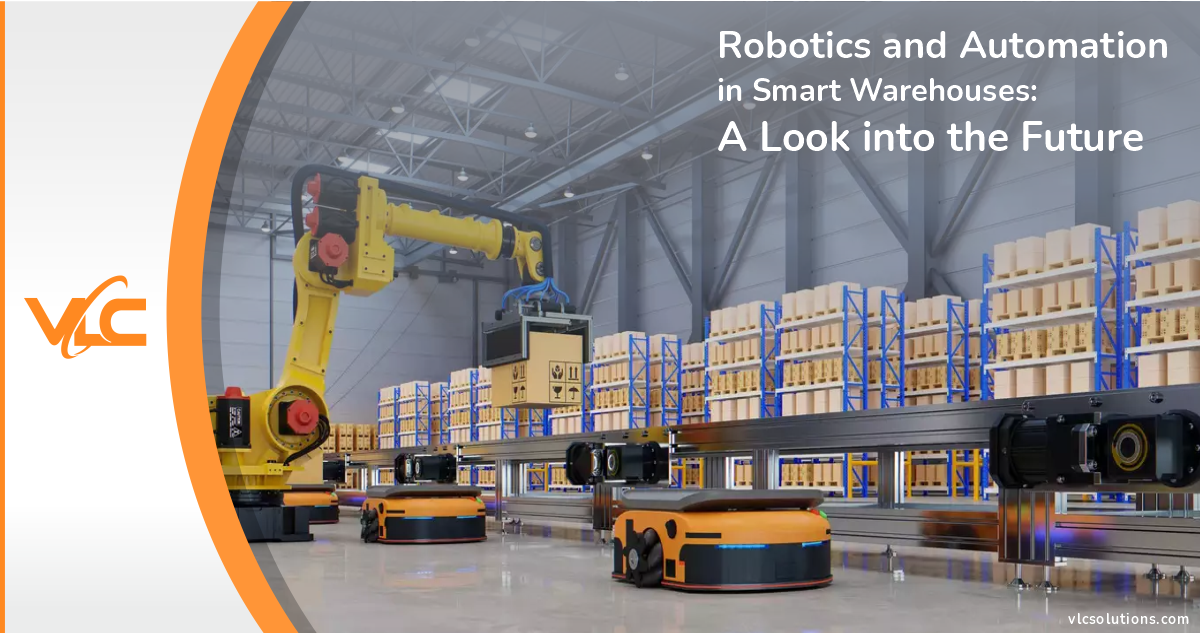Robotics and Automation in Smart Warehouses: A Look into the Future
The constantly changing world of logistics and warehousing needs robotics and automation to emerge as game-changers. The future of smart warehouses is taking shape before our eyes, and it’s a future driven by innovation, efficiency, and cutting-edge technology. This blog dives deep into the exciting world of robotics and automation within smart warehouses and explores what lies ahead.
The Evolution of Smart Warehouses:
Warehouses, once considered static storage spaces, have transformed into dynamic, technology-driven hubs. This evolution is fueled by several key factors:
E-commerce Revolution
The fast growth of e-commerce has revolutionized the way we shop. As more consumers turn to online platforms for their purchases, warehouses are adapting to handle the surge in demand for quick and accurate order fulfillment.
Consumer Expectations
Consumers expect rapid delivery in today’s rapid-paced world. Smart warehouses are rising to the challenge by using automation to significantly reduce order processing and shipping times, meeting these high expectations.
Labor Challenges
Warehouse labor can be a limiting factor. Labor shortages, high turnover rates, and the need for social distancing, especially during the COVID-19 pandemic, have accelerated the adoption of automation solutions.
Current Applications of Robotics and Automation in Smart Warehousing:
The adoption of robotics and automation in smart warehouses is already in full swing. Here are some of the current applications that are reshaping the logistics landscape:
Autonomous Mobile Robots (AMRs)
AMRs are becoming commonplace in warehouses. These intelligent robots navigate autonomously, carrying out tasks such as inventory replenishment, order picking, and material transport. They are highly adaptable and can work alongside human employees safely.
Automated Guided Vehicles (AGVs)
AGVs have been around for a while, but their capabilities are continually expanding. These vehicles follow predetermined paths, transporting goods within the warehouse. They are crucial for materials handling and reducing the need for manual labor.
Pick and Place Robots
One of the most critical aspects of warehousing is order picking. Pick and place robots use advanced computer vision and machine learning algorithms to identify and pick items from shelves with incredible speed and accuracy. They work 24/7, significantly increasing warehouse productivity.
Conveyor and Sortation Systems
Conveyor systems have been a staple of warehouses for years, but they are now smarter and more efficient than ever. Automated sortation systems use sensors and software to route packages efficiently, reducing errors and speeding up the sorting process.
Warehouse Management Systems (WMS)
WMS software has evolved to become the central nervous system of smart warehouses. This software use real-time data and analytics to streamline inventory management, order fulfillment, and overall warehouse operations. They integrate seamlessly with robotics and automation to ensure smooth workflow coordination.
The Future of Smart Warehouses:
As technology continues to advance, the future of smart warehouses holds exciting possibilities:
AI-Powered Decision-Making
Artificial intelligence (AI) and machine learning will play a more powerful role in warehouse operations. AI algorithms will optimize routes, predict demand, and make real-time decisions to improve efficiency and reduce costs.
Collaborative Robots (Cobots)
Collaborative robots, or cobots, will become integral to warehouse teams. These robots will work alongside human employees, assisting with tasks that require precision and repetition. Cobots are developed in a way to is safe and easy to interact with, making them valuable additions to the workforce.
Enhanced Connectivity
The Internet of Things (IoT) will interlink all the contact points in the warehouse. Sensors and devices will provide real-time data on inventory levels, equipment health, and environmental conditions, allowing for proactive maintenance and better decision-making time.
Sustainable Warehousing
The future of smart warehousing isn’t just about efficiency; it’s also about sustainability. Warehouses will incorporate eco-friendly practices, such as solar power, energy-efficient systems, and optimized transportation routes to reduce their environmental impact.
Conclusion
The future of smart warehouses is both exciting and transformative. Robotics and automation are driving efficiency, meeting consumer demands, and addressing labor challenges in ways we couldn’t have imagined a decade ago. As technology continues to propel, the evolution of smart warehouses will accelerate, providing even more opportunities for innovation and improvement in the logistics and warehousing industry. It’s a future where warehouses aren’t just places to store goods but dynamic hubs of technology-driven excellence.
As you embark on your journey through the world of smart warehousing, VLC Solutions stands ready to be your guiding partner. Join forces with our team of VLC experts to tailor solutions that cater to your distinct requirements, and unlock the advantages of a more intelligent and streamlined warehouse experience.
